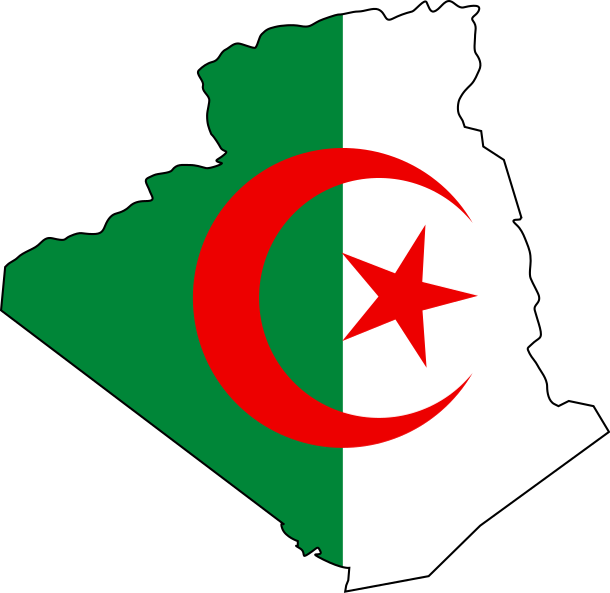
The first inhabitants of Algeria were Berber. Over the centuries, the country has seen the influence of Carthaginians, Romans, Vandals, and the Arabs (this last group in the 8th century).
In 1830, the French invaded Algeria and expanded over North Africa. During the following 132 yeas, Algeria was a French colony. In 1962 Algeria obtained independence from France.
Since 1994 the military has exerted power in Algeria, placing Abdelaziz Bouteflika in the presidency.
Modern Algerian literature, split between Arabic and French, has been strongly influenced by the country’s recent history. Famous novelists of the twentieth century include Mohammed Dib, Albert Camus, and Kateb Yacine, while Assia Djebar is widely translated. Among the important novelists of the 1980s wereRachid Mimouni, later vice-president of Amnesty International, and Tahar Djaout, murdered by an Islamist group in 1993 for his secularist views.
In philosophy and the humanities, Jacques Derrida, the father of deconstruction, was born in El Biar in Algiers; Malek Bennabi and Frantz Fanon are noted for their thoughts on decolonization; Augustine of Hippo was born in Tagaste (modern-day Souk Ahras); and Ibn Khaldun, though born in Tunis, wrote theMuqaddima while staying in Algeria. Algerian culture has been strongly influenced by Islam, the main religion. The works of the Sanusi family in pre-colonial times, and of Emir Abdelkader and Sheikh Ben Badis in colonial times, are widely noted. The Latin author Apuleius was born in Madaurus (Mdaourouch), in what later became Algeria.
The population of Algeria is 35,190,000 (January 2009 est.), with 99% classified ethnically as Arab or Berber. About 90% of Algerians live in the northern, coastal area; the minority who inhabit the Sahara are mainly concentrated in oases, although some 1.5 million remain nomadic or partly nomadic. Almost 30% of Algerians are under the age of 15. Algeria has the fourth lowest fertility rate in the Greater Middle East, after those of Cyprus, Tunisia, and Turkey.
The ethnic ancestry of most Algerians is composed of Berbers (mostly Zenatas and Numidians) and Middle-East populations who settled Northwest Africa at various period of the history such as ancient Punics and Arabs (such as Banu Hilal tribes).
Linguistically, ~83% of Algerians speak Algerian Arabic, while Berber dialects are spoken in the Kabyle and Chaoui regions.French is widely understood, and Standard Arabic (FosHaa) is taught to and understood by most Algerian youth.
Algeria has always been noted for the fertility of its soil. 25% of Algerians are employed in the agricultural sector.
A considerable amount of cotton was grown at the time of the United States’ Civil War, but the industry declined afterwards. In the early years of the twentieth century efforts to extend the cultivation of the plant were renewed. A small amount of cotton is also grown in the southern oases. Large quantities of dwarf palm are cultivated for the leaves, the fibers of which resemble horsehair. The olive (both for its fruit and oil) and tobacco are cultivated with great success.
More than 30,000 km2 (7,000,000 acres) are devoted to the cultivation of cereal grains. The Tell Atlas is the grain-growing land. During the time of French rule its productivity was increased substantially by the sinking of artesian wells in districts which only required water to make them fertile. Of the crops raised,wheat, barley and oats are the principal cereals. A great variety of vegetables and fruits, especially citrus products, are exported. Algeria also exports figs,dates, esparto grass, and cork. It is the largest oat market in Africa.

Notes from Wikipedia








